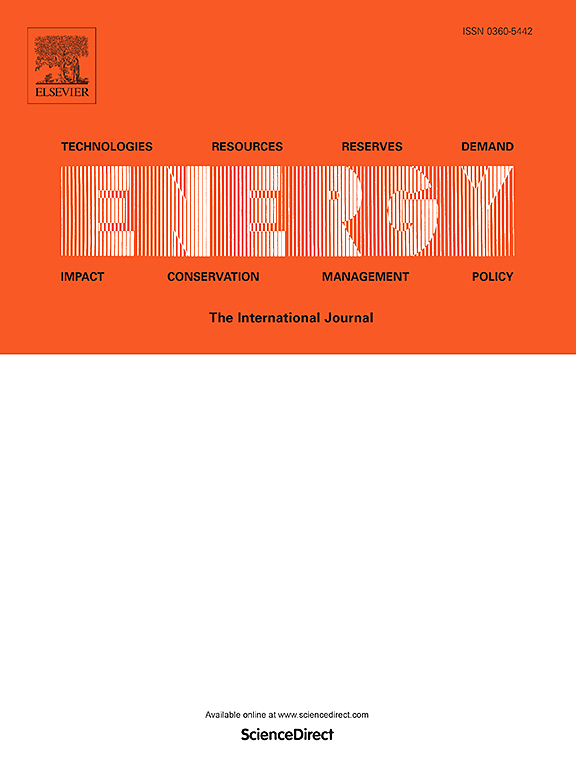Enhanced thermal management system for Li-ion batteries using phase change material and liquid cooling under realistic driving cycles
IF 9
1区 工程技术
Q1 ENERGY & FUELS
引用次数: 0
Abstract
Designing effective thermal management for electric vehicle batteries is crucial for ensuring safety, reliability, while minimizing weight and operational costs. This study examines a hybrid battery thermal management system (HBTMS), integrating liquid-cooled plates with phase change material (PCM). We evaluate both continuous (CC) and intermittent cooling (IC) strategies across four realistic drive cycles and two rapid discharge-charge cycles, with configurations including natural convection, standalone PCM, serpentine cold plate (SCP) without PCM, and hybrid cold plates in serpentine and zig-zag patterns (ZCP) with PCM. The hybrid ZCP enhances thermal performance over traditional designs by increasing coolant turbulence and PCM mixing, reducing system weight by 52.9 % due to the lower density of PCM. Using IC, which adjusts coolant flow based on PCM melt fraction, hybrid ZCP decreases pumping power by up to 83.9 % and reduces coolant flow duration to 13.9 % of total cycle time. Higher coolant velocities lower battery temperatures but increase pumping power, whereas lower inlet temperatures accelerate cooling and PCM solidification. While CC offers better thermal regulation, IC markedly reduces energy consumption while maintaining adequate thermal performance, demonstrating the hybrid ZCP's efficacy.

求助全文
约1分钟内获得全文
求助全文
来源期刊

Energy
工程技术-能源与燃料
CiteScore
15.30
自引率
14.40%
发文量
0
审稿时长
14.2 weeks
期刊介绍:
Energy is a multidisciplinary, international journal that publishes research and analysis in the field of energy engineering. Our aim is to become a leading peer-reviewed platform and a trusted source of information for energy-related topics.
The journal covers a range of areas including mechanical engineering, thermal sciences, and energy analysis. We are particularly interested in research on energy modelling, prediction, integrated energy systems, planning, and management.
Additionally, we welcome papers on energy conservation, efficiency, biomass and bioenergy, renewable energy, electricity supply and demand, energy storage, buildings, and economic and policy issues. These topics should align with our broader multidisciplinary focus.
 求助内容:
求助内容: 应助结果提醒方式:
应助结果提醒方式:


